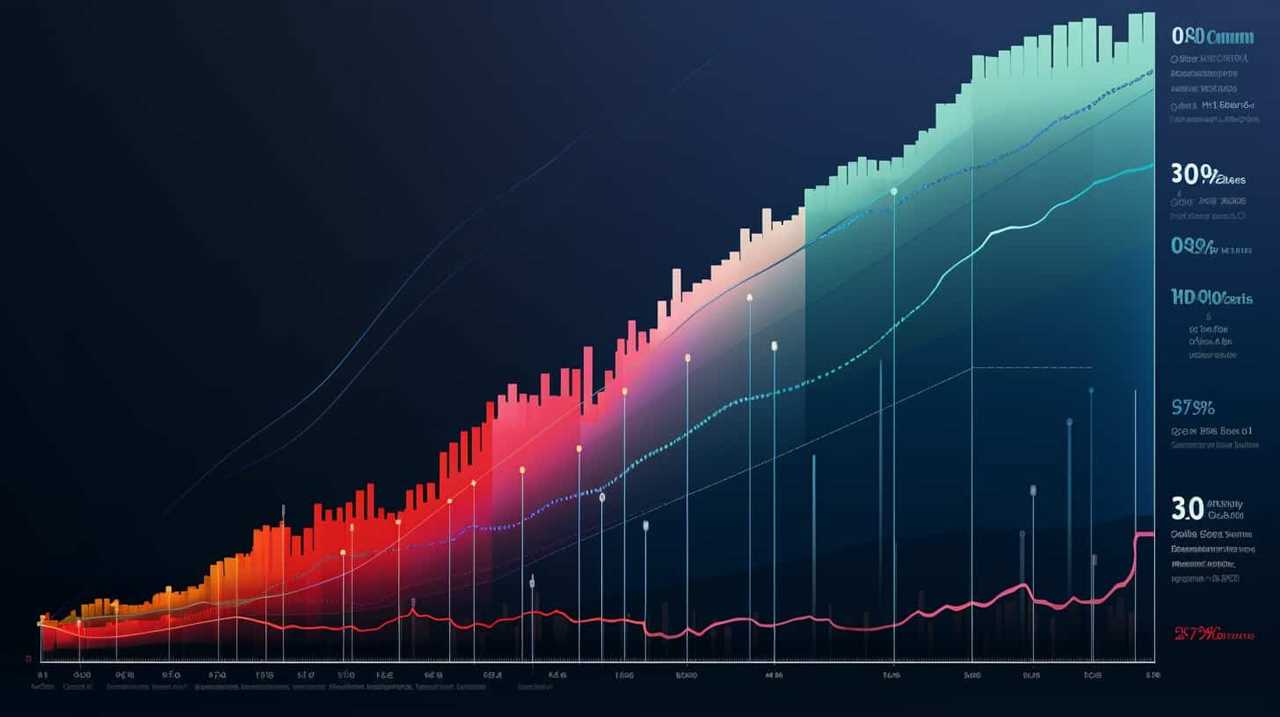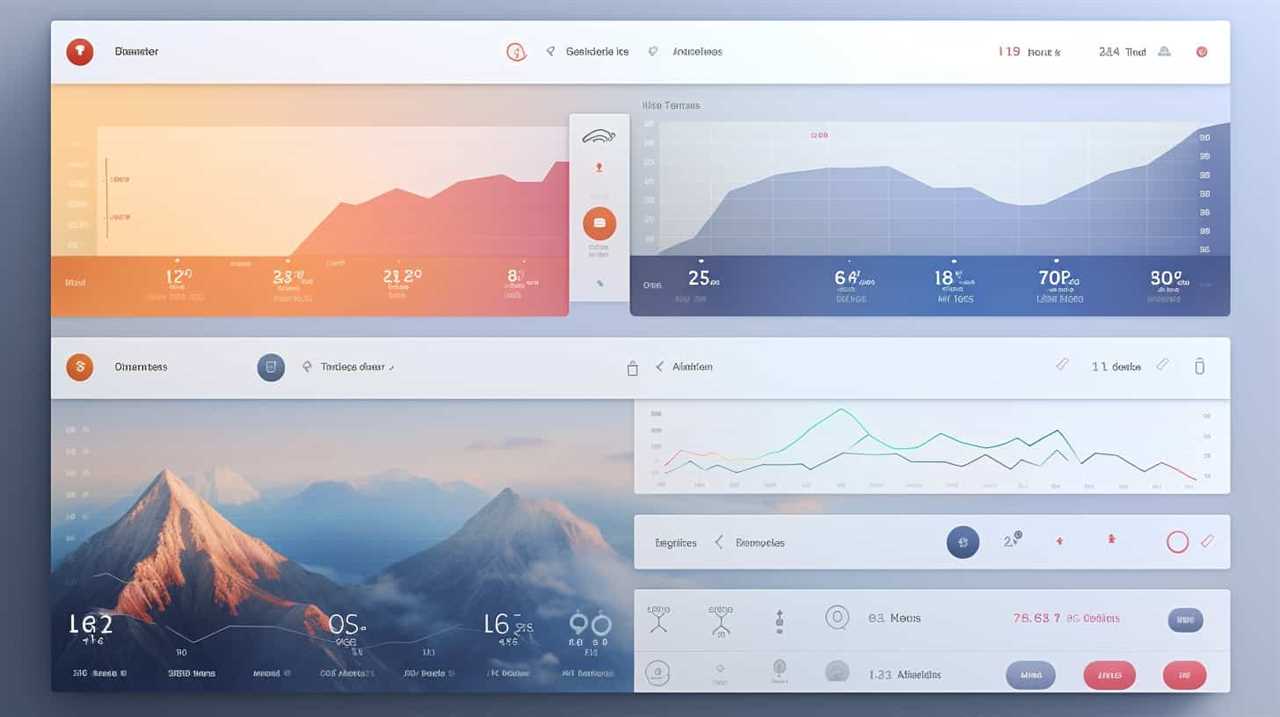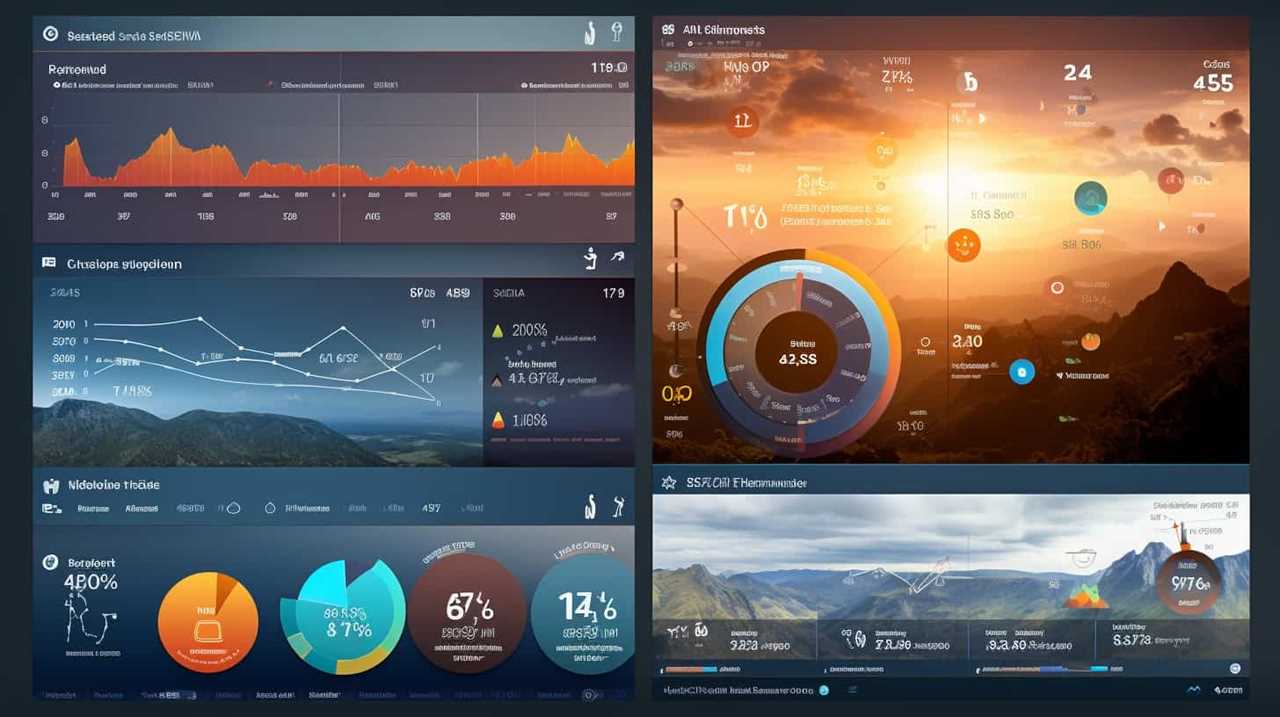Have you ever wondered if SEO services really deliver the results they promise?
Well, let us tell you, they absolutely do! In this article, we’re going to dive deep into the world of SEO and explore the undeniable power it holds.
From understanding the basics to measuring success, we’ll leave no stone unturned. So sit back, relax, and get ready to discover the secrets of SEO mastery. Trust us, you won’t be disappointed.
Key Takeaways
- Implementing effective SEO strategies improves online visibility and organic traffic.
- Keyword research and on-page optimization are important for SEO success.
- Off-page SEO strategies enhance website visibility and ranking.
- SEO takes time to build and maintain but can result in sustainable rankings and organic visibility.
Understanding the Basics of SEO
In our quest to understand the basics of SEO, we’ll delve into the intricacies of optimizing websites for search engines. SEO techniques and trends are constantly evolving, making it crucial for website owners and marketers to stay updated on the latest SEO best practices and guidelines.

By implementing effective SEO strategies, businesses can improve their online visibility, increase organic traffic, and ultimately drive more conversions. Some key SEO techniques include keyword research, on-page optimization, link building, and content creation.
It’s important to follow SEO best practices, such as creating high-quality, relevant content, optimizing meta tags, using descriptive URLs, and ensuring mobile-friendliness.
The Importance of Keyword Research
Moving on to the importance of keyword research, we can see how it plays a crucial role in optimizing websites for search engines. Conducting a competitive analysis allows us to identify the keywords that our competitors are targeting and determine the level of competition for those keywords. This helps us choose the most relevant and valuable keywords for our own website.
Additionally, keyword research helps us understand the keyword density, or the number of times a keyword appears on a webpage, which affects its ranking on search engine results pages. By strategically incorporating keywords into our website content, we can improve our visibility and attract more organic traffic.

In the next section, we’ll explore on-page optimization techniques that further enhance our SEO efforts.
On-Page Optimization Techniques
When it comes to optimizing your website for search engines, two important on-page techniques shouldn’t be overlooked: keyword placement and meta tag optimization.
Proper keyword placement throughout your website’s content helps search engines understand what your website is about and improves its visibility in search results.
Additionally, optimizing your meta tags, including the title tag and meta description, can help improve click-through rates and attract more organic traffic to your website.

Keyword Placement Importance
Our experience has shown that proper keyword placement is crucial for effective on-page optimization techniques. When it comes to optimizing your website for search engines, it’s important to strategically place your keywords throughout your content. This helps search engines understand the relevance and topic of your web page.
One important aspect to consider is keyword density, which refers to the number of times your target keywords appear on a page. However, it’s essential to maintain a natural flow of your content and avoid overstuffing keywords.
Another important factor to consider is optimizing meta tags, such as the meta title and meta description. These tags provide brief summaries of your web page to search engines, and including relevant keywords can help improve your page’s visibility in search results.
Transitioning into the subsequent section about meta tag optimization, let’s explore how to effectively optimize these tags for better search engine rankings.

Meta Tag Optimization
To optimize your website for better search engine rankings, we employ effective on-page optimization techniques, such as meta tag optimization. Meta tags are snippets of code that provide information about a webpage to search engines and visitors. By optimizing your meta tags, you can improve your website’s visibility and attract more organic traffic.
There are several types of meta tags that are important for SEO ranking factors. The most common ones include the title tag, meta description, and meta keywords tag. The title tag is displayed as the headline of a search result and should accurately describe the page’s content. The meta description is a brief summary of the page and should entice users to click on your link. The meta keywords tag used to be important for SEO, but search engines no longer consider it in their ranking algorithms.
Incorporating relevant and well-optimized meta tags can significantly impact your website’s search engine rankings. It is important to carefully craft these tags to accurately represent your page’s content and attract potential visitors. Here is an example of how meta tags should be implemented:
| Meta Tag | Description |
|---|---|
| Title Tag | Main heading displayed in search engine results |
| Meta Description | Brief summary of the page content |
| Meta Keywords | Descriptive keywords related to the page content |
Off-Page SEO Strategies
When it comes to off-page SEO strategies, there are a few key points to consider.

First and foremost, the quality of backlinks is crucial for improving your website’s search engine rankings. By securing high-quality backlinks from reputable sources, you can demonstrate to search engines that your website is authoritative and trustworthy.
Additionally, social media engagement plays a vital role in off-page optimization, as it helps to increase brand visibility and drive traffic to your site.
Lastly, guest posting on relevant websites can provide valuable exposure, allowing you to reach a wider audience and build credibility within your industry.
Backlink Quality Importance
Using high-quality backlinks is a crucial aspect of effective off-page SEO strategies. Backlinks are links from external websites that point back to your own website. They serve as a vote of confidence and can significantly impact your website’s search engine rankings.

However, not all backlinks are created equal. It’s important to conduct thorough backlink analysis to ensure that the links you’re building are from reputable and authoritative sources. Building a strong backlink profile requires a thoughtful and strategic approach.
It involves identifying relevant websites, reaching out to them, and creating compelling content that encourages them to link back to your site. By focusing on quality rather than quantity, you can improve your website’s visibility and drive organic traffic.
Social Media Engagement
Social media engagement plays a pivotal role in the success of off-page SEO strategies. Having a strong presence on social media platforms not only helps in increasing social media reach but also enhances brand visibility and credibility.
To effectively utilize social media for SEO purposes, it’s important to implement effective social media engagement strategies. This includes creating valuable and shareable content, actively engaging with followers, and participating in relevant discussions and communities.

By consistently posting high-quality content, responding to comments and messages promptly, and leveraging social media analytics, businesses can optimize their social media presence and drive more traffic to their websites.
Furthermore, social media engagement can also lead to increased backlinks and brand mentions, which are important factors in improving search engine rankings.
Transitioning into the subsequent section about ‘guest posting benefits,’ let’s explore another powerful off-page SEO strategy.
Guest Posting Benefits
Guest posting offers numerous benefits for off-page SEO strategies. It’s an effective way to build high-quality backlinks, which play a crucial role in improving search engine rankings.

By contributing valuable content to other websites in your industry, you can establish yourself as an authority and attract a relevant audience to your own site. Guest posting also provides the opportunity to reach new audiences and expand your online presence.
Furthermore, when you include links to your website within your guest posts, you can drive referral traffic and increase your site’s visibility. To make the most of guest posting opportunities, it’s important to focus on relevant websites with a strong domain authority and engaged audience.
By incorporating guest posting into your link building strategies, you can enhance your off-page SEO efforts and improve your website’s visibility in search engine results.
Now, let’s dive into the role of backlinks in SEO.

The Role of Backlinks in SEO
Backlinks play a crucial role in boosting the effectiveness and visibility of SEO services. They’re the backbone of successful link building strategies. When other websites link to your site, search engines view it as a vote of confidence, indicating that your content is valuable and trustworthy.
However, not all backlinks are created equal. The role of anchor text in backlinks is essential. Anchor text is the clickable text that appears within a hyperlink. It provides context to search engines about the content of the linked page. Using relevant and descriptive anchor text helps search engines understand the relevance of the linked page, improving its visibility in search results.
Therefore, incorporating a well-planned link building strategy with high-quality backlinks and optimized anchor text is crucial for SEO success.
The Impact of Content Quality on SEO
To understand the impact of content quality on SEO, we need to examine the role it plays in attracting organic traffic and improving search engine rankings.

Content relevance is crucial for SEO success because search engines prioritize websites that provide valuable and relevant information to users. When your content is relevant to the keywords and topics your target audience is searching for, it increases the chances of your website appearing in search results.
Moreover, high-quality content enhances the user experience by providing valuable and engaging information. When users find your content helpful and informative, they’re more likely to spend more time on your website, reducing bounce rates and increasing dwell time.
This positive user experience signals to search engines that your website is valuable and should be ranked higher in search results. Therefore, investing in high-quality and relevant content is essential for improving your SEO performance.
The Power of Technical SEO
Our team’s experience with technical SEO has shown its power in improving website performance and visibility. Technical SEO implementation involves optimizing various technical aspects of a website to enhance its search engine rankings. One crucial aspect is website loading speed optimization, which directly impacts user experience and search engine rankings. By optimizing the website’s code, compressing images, and minimizing HTTP requests, we can significantly improve loading speeds. This not only enhances user experience but also reduces bounce rates and increases the likelihood of higher search engine rankings.

To illustrate the impact of technical SEO implementation on website performance, consider the following table:
| Metric | Before Optimization | After Optimization |
|---|---|---|
| Page Loading Speed | 8 seconds | 2 seconds |
| Mobile Friendliness | Poor | Excellent |
| Organic Traffic | 5000 visitors/month | 8000 visitors/month |
As you can see, technical SEO plays a vital role in improving website performance and visibility. Now, let’s delve into the importance of mobile optimization and SEO.
Mobile Optimization and SEO
Continuing with the discussion on the power of technical SEO, let’s now explore the importance of mobile optimization and its impact on SEO.
In today’s digital landscape, having a mobile-friendly website is no longer just a nice-to-have; it’s a necessity. With the increasing use of smartphones and tablets, optimizing your website for mobile SEO is crucial to ensure that your site ranks well in search engine results.

Mobile website optimization involves improving the user experience on mobile devices, such as enhancing site speed, ensuring responsive design, and optimizing content for mobile screens. Not only does mobile optimization improve your SEO rankings, but it also enhances user satisfaction and engagement.
As search engines prioritize mobile-friendly websites, neglecting mobile SEO can have a significant negative impact on your online visibility and traffic. So, it’s essential to prioritize mobile optimization as part of your overall SEO strategy.
Now, let’s delve into the next section, which explores the comparison between SEO and paid advertising.
SEO Vs. Paid Advertising: Which Is Better
When comparing SEO and paid advertising, there are several important points to consider.

Firstly, cost-effectiveness is a key factor. SEO services typically require an initial investment, but they can provide long-term benefits without ongoing costs. On the other hand, paid advertising requires ongoing spending to maintain visibility.
Secondly, analyzing the quality of traffic is crucial. SEO focuses on attracting organic traffic, which tends to have higher conversion rates compared to paid advertising, where clicks can come from less targeted sources.
Lastly, evaluating the long-term benefits is essential. SEO takes time to build and maintain, but it can result in sustainable rankings and organic visibility. Paid advertising, on the other hand, provides immediate visibility but stops as soon as the budget ends.
Cost-Effectiveness Comparison
A cost-effectiveness comparison between SEO and paid advertising reveals which option yields better results. When analyzing the cost effectiveness of SEO and paid advertising, it’s important to consider the return on investment (ROI) comparison. Here are some key points to consider when evaluating the cost effectiveness of these two options:

- SEO has a higher upfront cost but can provide long-term benefits and higher organic traffic.
- Paid advertising allows for immediate visibility but requires ongoing investment to maintain results.
- SEO can lead to higher conversion rates and better targeting of specific keywords.
- Paid advertising offers more control over targeting and can generate quick results.
- SEO provides a higher ROI over time, while paid advertising offers immediate results but may become less cost-effective in the long run.
Considering these factors, it’s clear that a cost-effectiveness analysis is crucial in determining the best strategy for your business.
Now, let’s dive into the next section about traffic quality analysis.
Traffic Quality Analysis
To assess the effectiveness of SEO services, it is important to compare the traffic quality between SEO and paid advertising. While paid advertising can generate immediate traffic, SEO focuses on long-term organic growth. Traffic analysis techniques can help determine which strategy is better for your business.
A comparison between SEO and paid advertising can be seen in the table below:

| Aspect | SEO | Paid Advertising |
|---|---|---|
| Cost | Lower cost, as it focuses on organic growth | Higher cost, as it requires ad spending |
| Traffic Quality | High-quality traffic from targeted keywords | Immediate traffic, but may have lower quality |
| Conversion Rate | Conversion rate optimization is possible | Conversion rate optimization is possible |
| Long-term Sustainability | Organic growth can provide sustained traffic | Relies on continuous ad spending |
While paid advertising may provide immediate traffic, SEO offers long-term sustainability and high-quality traffic. By focusing on conversion rate optimization, SEO can help convert traffic into leads and customers. Therefore, for businesses looking for sustainable growth and high-quality traffic, SEO is a better option compared to paid advertising.
Long-Term Benefits Evaluation
Continuing the analysis of long-term benefits, let’s compare the advantages of SEO and paid advertising to determine which approach is more effective. When evaluating the effectiveness of these two strategies, it’s crucial to consider the long-term return on investment (ROI). Here are some key points to consider:
- SEO:
- Provides sustainable organic traffic.
- Builds credibility and trust with users.
- Offers long-term visibility in search engine rankings.
- Requires ongoing optimization efforts for sustained results.
- Takes time to see significant results, but can deliver higher ROI in the long run.
- Paid Advertising:
- Offers immediate visibility and results.
- Allows for precise targeting and control over ad campaigns.
- Requires continuous investment to maintain results.
- Can be costly, especially for competitive industries.
- Provides quick but potentially short-lived ROI.
When comparing long-term ROI, SEO has the potential to deliver higher returns due to its sustainable nature and credibility-building benefits. However, paid advertising can be a valuable strategy for generating immediate results and targeting specific audiences.
Ultimately, the choice between SEO and paid advertising depends on your business goals, budget, and timeline.

Measuring the Success of SEO Campaigns
Our team’s primary goal is to measure the success of SEO campaigns through various metrics and analytics. One of the key metrics we use to track the effectiveness of SEO is measuring ROI (Return on Investment). This metric helps us determine the financial impact of our SEO efforts by comparing the revenue generated from organic search traffic against the cost of implementing SEO strategies.
In addition to measuring ROI, we also focus on tracking conversions. Conversions refer to the desired actions taken by users on a website, such as making a purchase, filling out a form, or signing up for a newsletter. By analyzing conversion rates, we can assess the effectiveness of our SEO campaigns in driving relevant and engaged traffic to the site.
To illustrate the importance of measuring ROI and tracking conversions, here’s a table showcasing the results of two hypothetical SEO campaigns:
| Metrics | Campaign A | Campaign B |
|---|---|---|
| Organic Traffic | 10,000 visits | 8,000 visits |
| Conversion Rate | 2% | 3% |
| Revenue | $20,000 | $24,000 |
| ROI | 200% | 240% |
As you can see, Campaign B has a higher conversion rate and generates more revenue, resulting in a higher ROI. This demonstrates the significance of accurately measuring the success of SEO campaigns, as it allows us to make data-driven decisions and optimize our strategies for better results.

Frequently Asked Questions
How Long Does It Typically Take to See Results From SEO Services?
On average, it takes a certain amount of time to see results from SEO services. The effectiveness measurement varies, but with our expertise, we can help you achieve success in a timely manner.
Are There Any Risks Involved in Using SEO Services?
When it comes to risks in outsourcing SEO services, we must consider the impact of algorithm updates on SEO performance. It’s essential to stay informed and adapt our strategies accordingly to minimize any potential drawbacks.
Can SEO Services Guarantee a Top Ranking on Search Engine Results Pages?
SEO services cannot guarantee a top ranking on search engine results pages. However, they play a crucial role in improving visibility by optimizing keywords and enhancing user experience. Proper keyword research and user-centric strategies are vital for success.
What Factors Should I Consider When Choosing an SEO Service Provider?
When choosing an SEO service provider, it’s crucial to consider ongoing communication and the provider’s experience and expertise. Regular communication ensures your goals are met, while expertise guarantees effective strategies.

How Much Do SEO Services Usually Cost?
When comparing SEO service providers, it is important to consider the factors that determine SEO pricing. We can delve into the average costs associated with these services to gain a better understanding.
Conclusion
In conclusion, SEO services are a vital tool for businesses looking to improve their online presence and attract more organic traffic. By utilizing effective keyword research, optimizing on-page and off-page elements, and building high-quality backlinks, businesses can enhance their website’s visibility and increase their chances of ranking higher on search engine result pages.
SEO is a powerful strategy that can deliver long-term results and should be considered as a valuable investment for any business looking to succeed in the digital landscape. As the saying goes, ‘A well-optimized website is the key to unlocking online success.’
‘A well-optimized website is the key to unlocking online success by driving targeted traffic, increasing visibility, and ultimately boosting conversions and revenue.’











